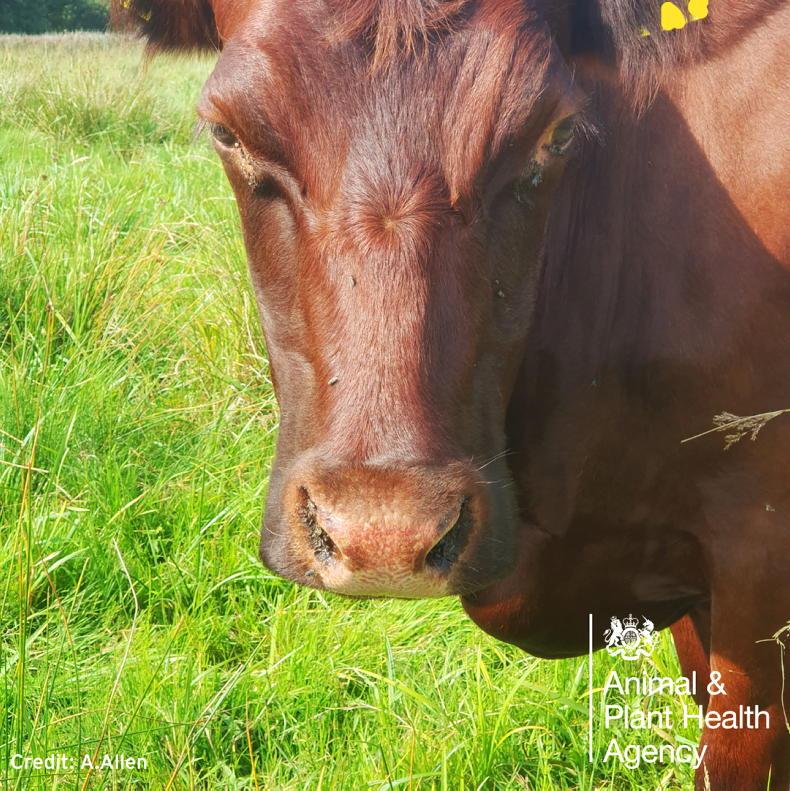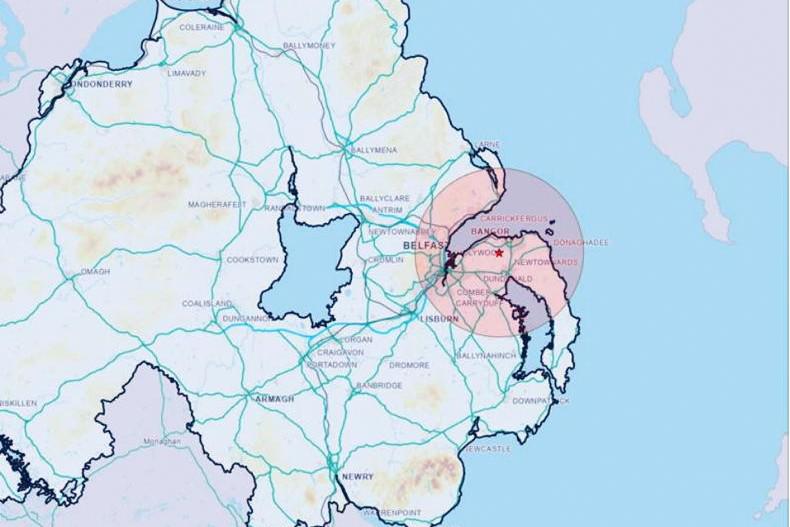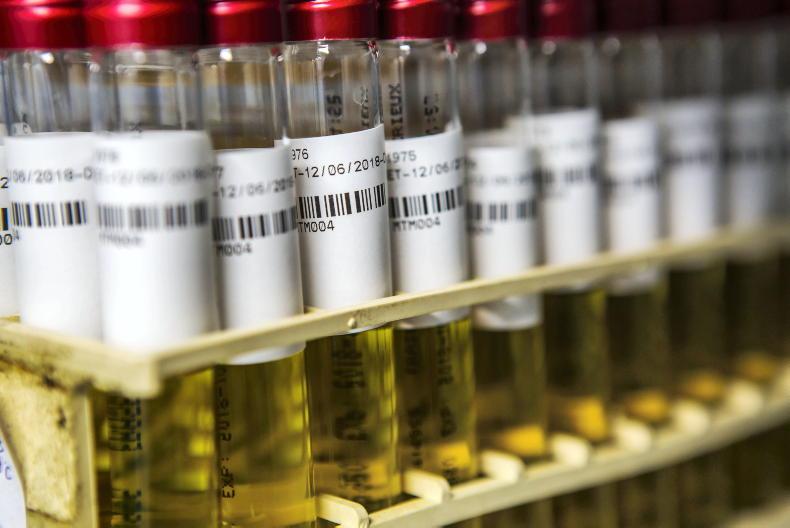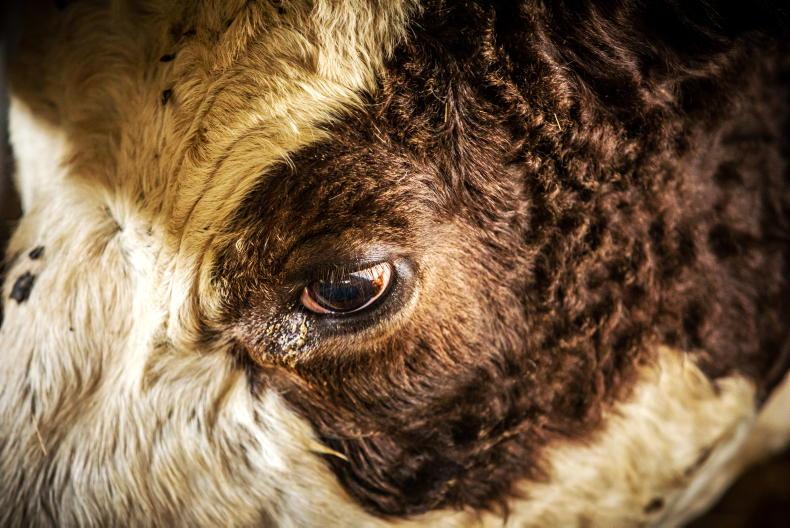It seems 2025 has the potential to be another bumper year for live exports, with demand for Irish cattle in key export markets looking robust. The number of bovines exported live was recorded at a 20-year high in 2024, with 379,491 head exported.
The market dynamics driving an 18%, or 56,812 head, increase in exports remain in place, with cattle supplies staying exceptionally tight across Europe and North Africa, and Ireland benefitting from bluetongue-related trade disruption across the continent.
There are a couple of potential health-related clouds which could unsettle these predictions, with the consequences of bluetongue hitting Irish shores remaining a significant concern, while an escalation of the recent outbreak of foot and mouth in Germany could have far -reaching consequences.
Glass half full
There is no point dwelling on what could be and keeping this in mind, Ireland has never been in a better position with regard to the array of markets available and the fact each one is importing significant numbers. Table 1 details the latest figures available for exports to the main countries importing more than 2,000 head, with up to a dozen more countries importing lower numbers. Figures are analysed by destination, breed type and age.
Calves were the largest category of stock to be exported in 2024, with over 200,000 calves leaving Ireland. Exports reduced marginally by over 7,000 head, with the drop driven by fewer calves exported to the Dutch market.
Explaining the market dynamics, Seamus McMenamin, Bord Bia sector manager for sheepmeat and livestock, says that live exports to the Dutch market in 2024 started slowly. The Netherlands thought it was in a position to operate with fewer imports from Ireland.
This saw fewer calves exported earlier in the season and when processors realised domestic calf numbers were tighter and imports from other traditionally strong markets were more limited, it was too late to compensate, with increased competition for Irish Friesian bulls and numbers limited.
This resulted in the unusual import profile seen in Table 1, with the market importing over 38,500 dairy calves aged less than six weeks and 32,770 beef crosses from the dairy herd. Beef-cross would typically not be purchased for veal production, but producers had no other option as the season progressed.
There is much talk about the Dutch market at present with imports in the future likely to be limited to animals from countries with an IBR control programme, while there are moves afoot to introduce new transport legislation which would make it very challenging to export young calves by road without trucks possessing milk feeding equipment.
However, these issues will not be a factor until at least 2026 and Seamus says demand for Irish calves should be strong from the outset in 2025, and possibly be strengthened by a continuation of the temporary ban on imports from Germany. The market could see calves exported by ship in 2025, which in the longer-term may alleviate transport pressures, but Ireland needs movement on an IBR programme to ensure future access. The market is a home for lighter Friesian bulls typically weighing from 45kg to 55kg.
Spanish market
While the Netherlands remains the primary market for young calves, the Spanish market imported higher numbers in 2024, with almost 55,000 calves imported aged less than six weeks. These were predominately beef-cross calves from the dairy herd, with Spain preferring an older calf aged four-to-five-weeks upwards and weighing in excess of 55kg, ideally.
The market also performed excellently in terms of demand for reared calves and light dairy-bred and beef-cross cattle, with 23,982 head imported aged six weeks to six months and 16,270 head aged six to 12 months.
Spain ended the year as the main market for Irish stock, importing over 108,000 head. Seamus explains that a significant reduction in feed and energy costs and a strengthening in beef price left Spanish feeders in a much stronger purchasing position in 2024.
Spain is also a significant player in the live export market and exports significant numbers to North African countries. Some of these are Irish cattle which have been purchased at a young age, fed to store or finished stage and then exported live. All forecasts point to demand picking up where it left off in 2024 and exports there hitting the ground running.

Seamus McMenamin, Bord Bia.
Northern Ireland
The cattle herd in Northern Ireland is predicted to fall further in 2025. Like Ireland, suckler numbers are in decline and dairy expansion has halted. The key driver underpinning higher imports from Ireland in 2024 was a significantly higher beef price, with prices in Northern Ireland trending in the region of 50c/kg ahead of Ireland for much of the year.
As can be seen in Table 1, the NI market was a key market for higher value cattle, with almost 20,000 head aged in excess of 30 months. A significant percentage of these were cull cows, with agents active in marts and inserting much more life in to the trade. The same can be said of forward stores, with over 15,000 head exported in the 24 to 30 month age bracket. With markets remaining buoyant, the trade can expect more of the same in 2025.
Italian veal units
Italy has become an important market for calf exports in recent years and in 2024 imported over 15,000 calves. The destination of these calves are Dutch veal producers, which have expanded operations in to other European countries due to environmental regulations in the Netherlands.
Italy has traditionally been a major market for high-value weanlings and while this remains the case, Italian feeders are also keen for beef-cross cattle, with Aberdeen Angus-crosses travelling in much higher numbers. Seamus predicts a bright year ahead, with a higher beef price and lower feed costs boosting the confidence of finishers.
Eastern European markets
As mentioned earlier, Ireland now has a much wider portfolio of customers for cattle exported live, with several Eastern European countries now active for Irish cattle. Some countries like Poland are facing reduced domestic production and higher demand in export markets, while other countries are replenishing stocks on the back of significant numbers being exported to Turkey and North African markets.
Poland is now also an important market for beef crosses from the dairy herd and dairy-bred stock. Hungary, Romania and Croatia combined imported significant numbers and Seamus says that feedback from producers is that Irish cattle are performing well, bolstering demand.
Moroccan market
The Moroccan market was the destination for almost 22,000 cattle in 2024, split roughly in to 68% beef-sired animals and 32% dairy-bred animals. Everyone associates the Moroccan market with importing young weanling bulls and while high numbers of bulls have been exported, it can be seen in Table 1 there are also significant numbers of older bulls and bullocks destined for the market.
Forecasts remain positive for the market in 2025, with ongoing enquiries from other North African markets. Israel is one such market, with exports in 2024 limited by its invasion of the Gaza territory and political tensions.
Algeria has started 2025 positively by importing almost 2,000 in-calf Holstein dairy heifers. The market is also active for beef animals, but is limited in an Irish context by the health certificate for store cattle including an IBR requirement. Slaughter cattle can be exported, but even if the maket is supplied by other countries it creates demand elsewhere for Irish exports.
Greek imports
Greece imported over 3,800 animals in 2024, with the market an excellent market for high value animals. Numbers are unlikely to vary too much from 2024, but if they remain the same it will be a great outcome, especially for Irish farmers producing excellent-quality and high-value U- and E-grading animals.
It seems 2025 has the potential to be another bumper year for live exports, with demand for Irish cattle in key export markets looking robust. The number of bovines exported live was recorded at a 20-year high in 2024, with 379,491 head exported.
The market dynamics driving an 18%, or 56,812 head, increase in exports remain in place, with cattle supplies staying exceptionally tight across Europe and North Africa, and Ireland benefitting from bluetongue-related trade disruption across the continent.
There are a couple of potential health-related clouds which could unsettle these predictions, with the consequences of bluetongue hitting Irish shores remaining a significant concern, while an escalation of the recent outbreak of foot and mouth in Germany could have far -reaching consequences.
Glass half full
There is no point dwelling on what could be and keeping this in mind, Ireland has never been in a better position with regard to the array of markets available and the fact each one is importing significant numbers. Table 1 details the latest figures available for exports to the main countries importing more than 2,000 head, with up to a dozen more countries importing lower numbers. Figures are analysed by destination, breed type and age.
Calves were the largest category of stock to be exported in 2024, with over 200,000 calves leaving Ireland. Exports reduced marginally by over 7,000 head, with the drop driven by fewer calves exported to the Dutch market.
Explaining the market dynamics, Seamus McMenamin, Bord Bia sector manager for sheepmeat and livestock, says that live exports to the Dutch market in 2024 started slowly. The Netherlands thought it was in a position to operate with fewer imports from Ireland.
This saw fewer calves exported earlier in the season and when processors realised domestic calf numbers were tighter and imports from other traditionally strong markets were more limited, it was too late to compensate, with increased competition for Irish Friesian bulls and numbers limited.
This resulted in the unusual import profile seen in Table 1, with the market importing over 38,500 dairy calves aged less than six weeks and 32,770 beef crosses from the dairy herd. Beef-cross would typically not be purchased for veal production, but producers had no other option as the season progressed.
There is much talk about the Dutch market at present with imports in the future likely to be limited to animals from countries with an IBR control programme, while there are moves afoot to introduce new transport legislation which would make it very challenging to export young calves by road without trucks possessing milk feeding equipment.
However, these issues will not be a factor until at least 2026 and Seamus says demand for Irish calves should be strong from the outset in 2025, and possibly be strengthened by a continuation of the temporary ban on imports from Germany. The market could see calves exported by ship in 2025, which in the longer-term may alleviate transport pressures, but Ireland needs movement on an IBR programme to ensure future access. The market is a home for lighter Friesian bulls typically weighing from 45kg to 55kg.
Spanish market
While the Netherlands remains the primary market for young calves, the Spanish market imported higher numbers in 2024, with almost 55,000 calves imported aged less than six weeks. These were predominately beef-cross calves from the dairy herd, with Spain preferring an older calf aged four-to-five-weeks upwards and weighing in excess of 55kg, ideally.
The market also performed excellently in terms of demand for reared calves and light dairy-bred and beef-cross cattle, with 23,982 head imported aged six weeks to six months and 16,270 head aged six to 12 months.
Spain ended the year as the main market for Irish stock, importing over 108,000 head. Seamus explains that a significant reduction in feed and energy costs and a strengthening in beef price left Spanish feeders in a much stronger purchasing position in 2024.
Spain is also a significant player in the live export market and exports significant numbers to North African countries. Some of these are Irish cattle which have been purchased at a young age, fed to store or finished stage and then exported live. All forecasts point to demand picking up where it left off in 2024 and exports there hitting the ground running.

Seamus McMenamin, Bord Bia.
Northern Ireland
The cattle herd in Northern Ireland is predicted to fall further in 2025. Like Ireland, suckler numbers are in decline and dairy expansion has halted. The key driver underpinning higher imports from Ireland in 2024 was a significantly higher beef price, with prices in Northern Ireland trending in the region of 50c/kg ahead of Ireland for much of the year.
As can be seen in Table 1, the NI market was a key market for higher value cattle, with almost 20,000 head aged in excess of 30 months. A significant percentage of these were cull cows, with agents active in marts and inserting much more life in to the trade. The same can be said of forward stores, with over 15,000 head exported in the 24 to 30 month age bracket. With markets remaining buoyant, the trade can expect more of the same in 2025.
Italian veal units
Italy has become an important market for calf exports in recent years and in 2024 imported over 15,000 calves. The destination of these calves are Dutch veal producers, which have expanded operations in to other European countries due to environmental regulations in the Netherlands.
Italy has traditionally been a major market for high-value weanlings and while this remains the case, Italian feeders are also keen for beef-cross cattle, with Aberdeen Angus-crosses travelling in much higher numbers. Seamus predicts a bright year ahead, with a higher beef price and lower feed costs boosting the confidence of finishers.
Eastern European markets
As mentioned earlier, Ireland now has a much wider portfolio of customers for cattle exported live, with several Eastern European countries now active for Irish cattle. Some countries like Poland are facing reduced domestic production and higher demand in export markets, while other countries are replenishing stocks on the back of significant numbers being exported to Turkey and North African markets.
Poland is now also an important market for beef crosses from the dairy herd and dairy-bred stock. Hungary, Romania and Croatia combined imported significant numbers and Seamus says that feedback from producers is that Irish cattle are performing well, bolstering demand.
Moroccan market
The Moroccan market was the destination for almost 22,000 cattle in 2024, split roughly in to 68% beef-sired animals and 32% dairy-bred animals. Everyone associates the Moroccan market with importing young weanling bulls and while high numbers of bulls have been exported, it can be seen in Table 1 there are also significant numbers of older bulls and bullocks destined for the market.
Forecasts remain positive for the market in 2025, with ongoing enquiries from other North African markets. Israel is one such market, with exports in 2024 limited by its invasion of the Gaza territory and political tensions.
Algeria has started 2025 positively by importing almost 2,000 in-calf Holstein dairy heifers. The market is also active for beef animals, but is limited in an Irish context by the health certificate for store cattle including an IBR requirement. Slaughter cattle can be exported, but even if the maket is supplied by other countries it creates demand elsewhere for Irish exports.
Greek imports
Greece imported over 3,800 animals in 2024, with the market an excellent market for high value animals. Numbers are unlikely to vary too much from 2024, but if they remain the same it will be a great outcome, especially for Irish farmers producing excellent-quality and high-value U- and E-grading animals.










SHARING OPTIONS